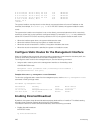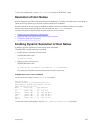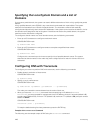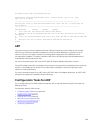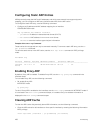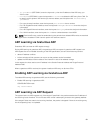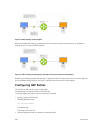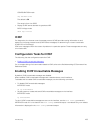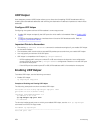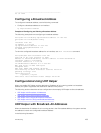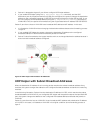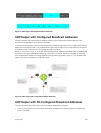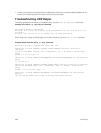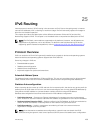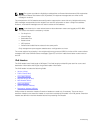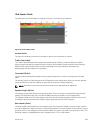
UDP Helper
User datagram protocol (UDP) helper allows you to direct the forwarding IP/UDP broadcast traffic by
creating special broadcast addresses and rewriting the destination IP address of packets to match those
addresses.
Configure UDP Helper
Configuring the system to direct UDP broadcast is a two-step process:
1. Enable UDP helper and specify the UDP ports for which traffic is forwarded. Refer to Enabling UDP
Helper.
2. Configure a broadcast address on interfaces that will receive UDP broadcast traffic. Refer to
Configuring a Broadcast Address.
Important Points to Remember
• The existing ip directed broadcast command is rendered meaningless if you enable UDP helper
on the same interface.
• The broadcast traffic rate should not exceed 200 packets per second when you enable UDP helper.
• You may specify a maximum of 16 UDP ports.
• UDP helper is compatible with IP helper (ip helper-address):
– UDP broadcast traffic with port number 67 or 68 are unicast to the dynamic host configuration
protocol (DHCP) server per the ip helper-address configuration whether or not the UDP port
list contains those ports.
– If the UDP port list contains ports 67 or 68, UDP broadcast traffic is forwarded on those ports.
Enabling UDP Helper
To enable UDP helper, use the following command.
• Enable UPD helper.
ip udp-helper udp-ports
Examples of Enabling and Viewing UDP Helper
The following example shows how to enable UDP helper.
Dell(conf-if-te-1/1)#ip udp-helper udp-port 1000
Dell(conf-if-te-1/1)#show config
!
interface TengigabitEthernet 1/1
ip address 2.1.1.1/24
ip udp-helper udp-port 1000
no shutdown
To view the interfaces and ports on which you enabled UDP helper, use the show ip udp-helper
command from EXEC Privilege mode.
Dell#show ip udp-helper
--------------------------------------------------
Port UDP port list
454
IPv4 Routing



